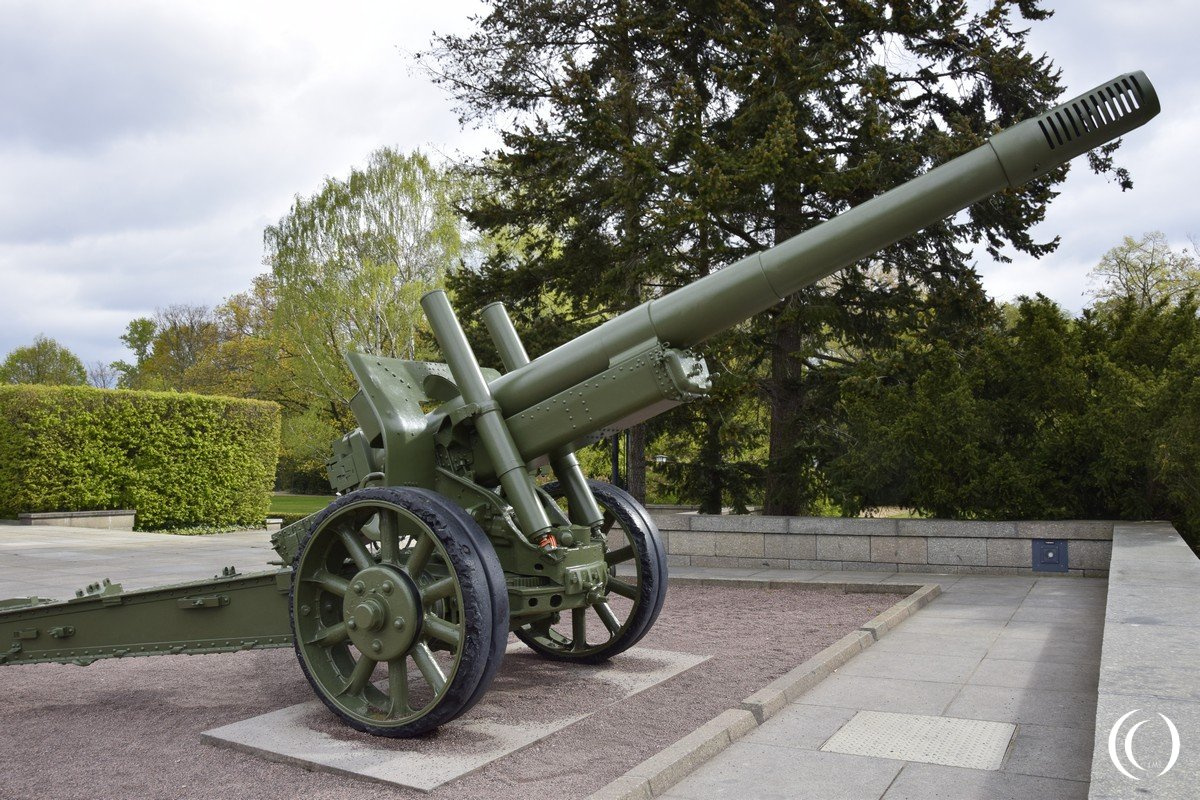
History
The Russian heavy field howitzer ML-20 is based on its predecessors the 152 mm gun M1910/34 and the 152 mm siege gun M1910. The latter was a pre-World War One design by the French Schneider company.
The upgrade was requested by the Russian GAU (Main Artillery Directorate) on the heavy 152 mm Howitzer. No. 172 Plant in Motovilikha in Russia developed two new guns under supervision of F.F. Petrov. The ML-15 and the ML-20 were presented, both using the same 152 mm barrels and recoil system as the former gun.


Although heavier and slower on roads the ML-20 gun was chosen for production. The ML-20 was produced from 1937 until 1946 with 6884 units produced.
The gun barrel of the 152 mm Heavy Field gun was also used on the SU-152 and the ISU-152 self-propelled guns. The SU types were based on the KV-1 heavy tanks and the ISU types were based on the IS-2 (Joseph Stalin-2) heavy tanks. One barrel was used in the Object 704, a single prototype using parts of the IS-3 heavy tank.


Specifications
The ML-20 152 mm Howitzer weighed 7270 kilograms, it was 8,18 meters long, 2,35 m wide and 2,27 m heigh. It fired a shell with a caliber of 152,4 mm and was placed on a split trail carriage. A trained crew fired 3 to 4 rounds a minute. It had a muzzle velocity of 655 m/s and a maximum firing range of 17,23 kilometers.
The ML-20 combines the characteristics of both a howitzer and a gun. Altho is gun was not the real power of the ML-20 it could fire direct fire (in a straight trajectory) next to indirect fire. It could be outfitted with different sights for each role and had 13 different types of propelland loads and almost 30 types of ammunition. A ML-20 shell wegihed 44 kilograms.

The ML-20 was one of the Soviets most successful artillery pieces. Although heavier than a short-range artillery piece and not made as a special long distance artillery piece it was somewhere in the middle outclassing German, Polish, French, Italian and more artillery pieces in the same class.
The 152 mm ML-20 was primarily used in the Howitzer role with indirect fire. The gun was used on fortifications, strong points, enemy personnel and other key objectives. The fragments of the 44 kg heavy shell penetrated 2- to 30 mm thick armor, taking light armored vehicles out of the fight or jamming the turrets on heavy armored vehicles like medium or heavy tanks.

The 152 mm howitzer-gun M1937 (ML-20) was captured by the hundreds when the Germans invaded Russia. The Wehrmacht renamed the gun to; 15,2 cm KH.433/1 (r) and started producing ammunition in 1943. The Finnish army captured 37 guns in the Winter War and during World War Two. The Fins renamed them 152 H 37 and received an additional 27 from Germany.